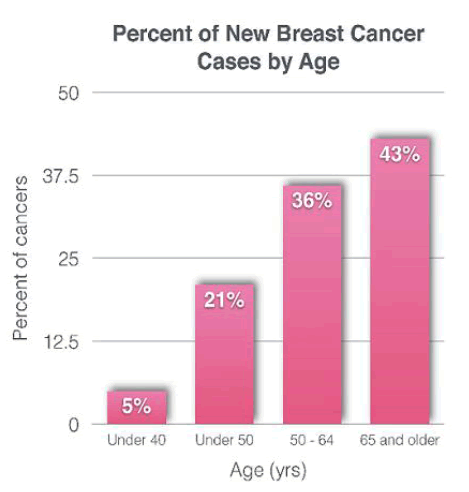Market analysis of Breast Cancer & Women’s health 2020
Breast cancer can develop due to reasons such as reduced breast feeding, rise in age of childbearing, undergoing estrogenic modifying drug treatments and high intake of oral contraceptive pills. The increase in the number of women complaining of such problems and the successive rise in the number of breast cancer cases are factors boosting the global market for breast cancer therapeutics during the forecast period.
Women health refers to the health problems that are unique to a women anatomy such as issues related to pregnancy, menopause, and female organs. Even though slightly less than half of the world's population is female, historically medical research neglect the health needs of women, other than reproductive issues due to gender-differentiated access to medical treatment. However, women’s health issues have attained higher international perceptibility in recent decades. Recently there have been significant changes in government and private support of women's health research, in regulations, policies and the organization of research efforts.
Another factor creating lucrative growth opportunities for breast cancer therapies is the increasing number of obese women. With change in lifestyle and unhealthy food habits, the rate of obesity is increasing by the day. Obesity further causes various health problems such as cardiovascular disorders, gall bladder diseases, diabetes, breathing problems, and breast cancer among others.
However, some breast cancer drugs may have serious side effects, and this may act as a hindrance to the market. Besides this, countries that lack of awareness may restrict expansion of the market. Also, social taboos prevalent in these countries may act as major deterrents to growth.
The first successful treatment for breast cancer was done by French surgeon Jean Louis Petit and later Scottish surgeon Benjamin Bell where the lymph nodes, breast tissue, and chest muscle are removed surgically. Surgeon William Stewart Halsted began performing and perfecting mastectomies around 1882. Halsted’s mastectomies were invasive where breasts, lymph nodes, and underlying muscles are being removed and the procedure was deemed necessary to prevent cancer from recurring but often left patients with severe pain and disability.
By the 1970’s, researchers began to develop lumpectomy- more limited surgery to remove only the cancerous tumor and any surrounding tissue affected by the tumor.
By 1985, researchers found that radiation followed by lumpectomy gave a chance of survival equal to the considerably move invasive mastectomy.
Around the 20th century, doctors used radiation therapy to shrink the cancerous cells. Chemotherapy became an option. It helped to shrink cancerous cells before surgery and prevent recurrence after surgery and treat cancer that is metastasized or has spread to other parts of the body. Scientists began to experiment with combined treatments to improve outcomes. Throughout the 1970’s, this procedure has been continued and this led to a better understanding of how cancer can develop and spread throughout the body. This understanding led to the development of more effective targeted treatments. This approach to treat cancer and research is still continuing today.
In 1923, the first large-scale review of women with breast cancer was done by English scientist Janet Lane-Claypon, which identified several risk factors that are still considered today.
In 1980’s and 1990’s, thousands of women undergoing breast cancer treatment and high dose bone marrow transplants hoping to have a good result, which turned it to a disaster after the loss of 15-20% of women’s life due to the treatment.
In 1995 report from the Nurses’ Health Study and 2002 results of research from the Women’s Health Initiative concluded that hormone replacement therapies which had become popular among menopausal women could significantly increase the risk of breast cancer.
In the late 1990’s, scientists found that certain variants of the genes BRCA1 and BRCA2 are associated with 80% of breast cancer risk. Some women who discover this gene mutation within their genetic makeup will take proactive steps to reduce their risk of cancer, including preemptive mastectomies and even hysterectomies.
As scientists deepen their understanding of the role of genetics in breast cancer risk, research on developing new techniques has been increased. Meanwhile, some research is being done on repair or even replaces harmful genes before breast cancer occurs.
As research continues to improve, there are several chances of every person to survive and can prevent breast cancer or any type of cancer. Taking healthy food, avoiding alcohol and smoking may be an important precaution from developing cancer. Regular self-exams and annual mammograms after 40 years old are recommended.

Contact Person:
Valerie Gorman | Event Manager
Conference series LLC
Email: futuredentistry@eventsupporting.org
-
Awards 2020 - 4th World Congress on Breast Cancer & Women’s Health
London, UK
Share This Article
Recommended Journals
Open Access Journals
Article Usage
- Total views: 2595
- [From(publication date): 0-2020 - Jan 15, 2025]
- Breakdown by view type
- HTML page views: 1929
- PDF downloads: 666
